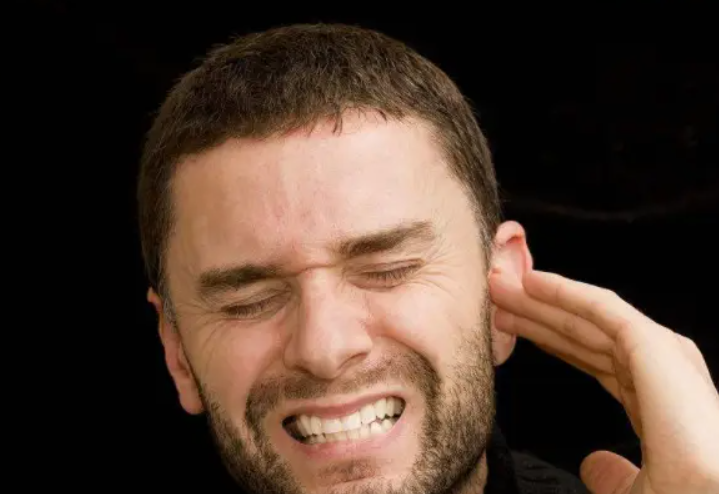
"Dizziness" is common in our daily life, although the symptoms look similar, but in fact there are many causes, such as anemia, cervical spine problems, lack of sleep and so on. One type of "dizziness" that you may not be familiar with is related to small stones in your ears.
Otoliths can heal on their own, but they occur repeatedly
Otolithosis is a peripheral vestibular disease with recurrent transient vertigo and characteristic nystagmus induced by changes in head position relative to gravity direction. Vertigo is often spinning, its own or foreign objects rotating, shaking instability, each lasting a few seconds or tens of seconds, often within a minute, change the position or rest, vertigo relief.
The prevalence of otoliths is about 2.4%, the incidence of the population is 10.7~ 64/100,000, the annual incidence of 0.6%, is the most common ENT department of peripheral vertigo disease, accounting for about 50~70% of all peripheral vertigo diseases, it can be said that otoliths is the ENT department and vertigo outpatient the most common disease.
According to the cause, otoliths are divided into idiopathic otoliths and secondary otoliths. Idiopathic otolith refers to the unknown cause, often accounting for the majority of otolith, while secondary otolith often refers to other ear or systemic diseases, such as Meniere's disease, vestibular neuritis, idiopathic sudden deafness, otitis media, head trauma, migraine, post-surgery (middle and inner ear surgery, oral and maxillofacial surgery, orthopaedic surgery, etc.), head trauma, and the application of ototoxic drugs.
Otoliths are self-limited diseases, but also has the characteristics of repeated attacks, that is, many patients with otoliths can be relieved or even cured after rest.
At the same time, otoliths also has the characteristics of repeated attacks, that is, under the stimulation of certain causes and incentives, it will occur repeatedly.
According to the current literature, the common causes of otoliasis include age degeneration, calcium deficiency, hormone disorder, hyperuricemia, trauma, neuritis, upper respiratory tract infection and related ear diseases such as otitis media, middle ear cholesteatoma and so on.
Common risk factors are: high stress, bad mood, sleep disorders, excessive exercise such as mountain climbing and playing ball, overwork, alcohol consumption, high purine diet and so on.
Identifying otoliths, remember "movement, short, bed"
Otoliths are more common in the elderly, although otoliths is self-limited, especially for first-time, young patients, the prognosis is relatively good.
However, for some elderly patients and patients with a longer course of disease, sudden vertigo can cause falls, inner panic and work disability. Elderly people tend to get up at night, dizziness occurs when getting up at night or taking a bath, and the risk of falls and fractures is high.
And repeated episodes of vertigo, the course of the disease prolonged, will cause patients obvious anxiety, tension, intermittent dizziness and instability of otoliths, affect the patient's efficient work, depriving a certain amount of social work time. Therefore, once the diagnosis of otoliths, timely medical treatment is very important.
So how do you identify otoliths? According to the characteristics of otoliths, the clinical characteristics of otoliths are "movement, short, bed", that is, hair on the move, often caused by head position change, such as: head up, head down and turn over to cause vertigo; The vertigo attack time is particularly short, often within a few seconds or tens of seconds, more than 1 minute.
Again, all attacks are often related to the "bed", that is, when getting up, lying down or turning over on the bed, patients can have mild dizziness and discomfort during the interval of their usual life and vertigo attacks.
Otoliths can be treated by manual reduction
The main treatment method of otoliths is otoliths reset, easy to operate, can be done by hand or with the aid of instruments, the effect is good. Different reduction methods should be selected according to different types of semicircular canals.
The principle is to put the head in different positions so that the otolith, which has fallen off into the semicircular canal, returns to the vestibule.
Almost all benign vertigo attacks are related to poor life and rest, staying up late to work, sedentary, long-term indoor activities to avoid sunlight, looking down at mobile phones for a long time, irregular and unhealthy eating habits, etc., can lead to vertigo attacks.
Experts advise to avoid bad habits. In addition, improving sleep disorders, vitamin D3 deficiency, calcium deficiency, hyperuricemia and other diseases, avoiding brain trauma, hormone disorders, etc., can better prevent vertigo attacks.

